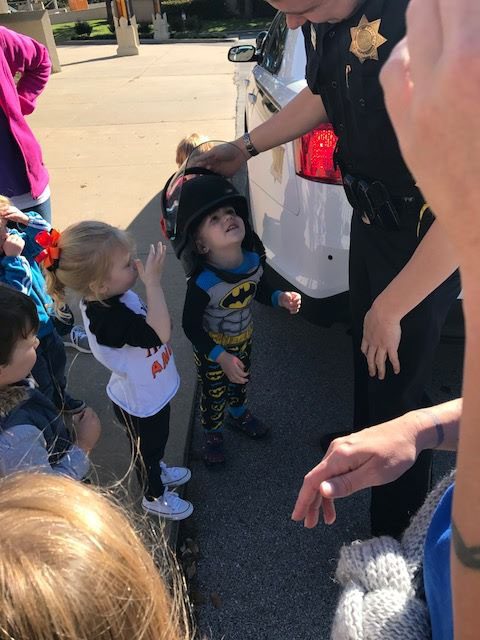
Photo courtesy OKCPD
We often think of law enforcement officers as just that – enforcers. The term connotes punishment and overlooks what Tulsa Police Chief Chuck Jordan calls one of the six integral pillars of the field: community policing.
Jordan describes community policing as officers and the community working together to solve crime. Maj. Paco Balderrama, community relations officer for the Oklahoma City Police Department, describes it as “a law enforcement philosophy which involves residents and stakeholder entities [giving] input and [taking] an active role in solving community problems.”
Building these relationships has far-reaching effects, Balderrama says.
“This includes reducing crime and increasing trust and cooperation between the community and the police,” he says. “This is particularly important in minority communities, where a lack of trust is a constant obstacle which hinders cooperation and can lead to increased tension.
“Partnerships and relationships must be forged between the community and its police force. This can help police departments better understand the communities’ concerns and needs to better help police create and implement policies and practices that are procedurally fair and will improve cooperation, reduce the fear of crime, and increase the quality of life. Modern community policing includes … proactive communication, transparency and cooperation in building trust with members of the community.”

In Tulsa, a recent grant provided funds toward interventions in a high-crime housing complex, where a community outreach officer makes connections with residents and neighbors every day. Jordan says that since the officer’s placement, crime rates in the area have fallen and residents are more satisfied with law enforcement. This is one of 77 initiatives in Tulsa that are either complete, underway or forthcoming.
In Oklahoma City, each patrol division has a community relations officer who serves as a liaison for residents and businesses. Youth programs and a heavy social media presence also contribute to building trust and solving problems together in OKC.
Balderrama says community policing involves a different mindset from usual interventions.
“Traditional law enforcement strategies are sometimes reactive,” he says. “A crime occurs, a victim calls 911, and the police respond to try to apprehend the offender or take a police report.”
The proactive approach of community policing is not new. Balderrama says that as far back as the mid-1800s, the London Metropolitan Police had beat officers walk the streets and interact with residents and business owners.

“The community knew and had a good relationship with their neighborhood beat officers, which created trust and dialogue,” he says. “As police forces modernized with police cars and car two-way radios, the police community relationships became less personal and more distant.
“The Oklahoma City Police Department, along with hundreds of other departments across the country, has pushed for increased engagement with its citizens and re-implementing the concept of community policing.”
Jordan adds: “Community policing has become the buzz word or panacea for everything, and it can be, but it’s really not new. If you look how policing was done in the 1950s, when there was more community involvement, we’re now going back to some old strategies.”
However, Jordan emphasizes that community policing as a concept and a goal has never disappeared entirely – indeed, that it is an integral part of everyday law enforcement.
“Everything is all-inclusive,” Jordan says. “Community policing is not a separate entity; all of policing is combined with community policing. It’s part of all our strategies.
“The biggest hurdle right now is getting community policing done with low staffing levels. We’re unfortunately at 1984 levels of staffing, but we have a population [with 60,000 more people] than then. We have Homeland Security tasks and more gangs. Calls for services are quadruple [what they were].

“Community policing is part of an unassigned time for our officers. We are spending 85 percent of our time on calls for service, and don’t have time to drive through a neighborhood, or stop and talk to someone watering their lawn. That’s where real relationships happen; that’s where trust happens. That’s our ultimate goal: to have enough people to have that proactive time to get out and police how we want to police.”
Jordan says community policing is a labor of love for officers.
“We count on the dedication of our officers,” he says. “We have to have dedication and keep up officer morale to accomplish these things.”
Balderrama says one way OKC residents can help is to apply for a job with the department; Oklahoma City is hiring about 100 police officers.
“Overall, Oklahoma City enjoys a strong and positive relationship with its media and community,” Balderrama says. “But this relationship, like any other, has to constantly be invested in with time, communication and engagement.”






















